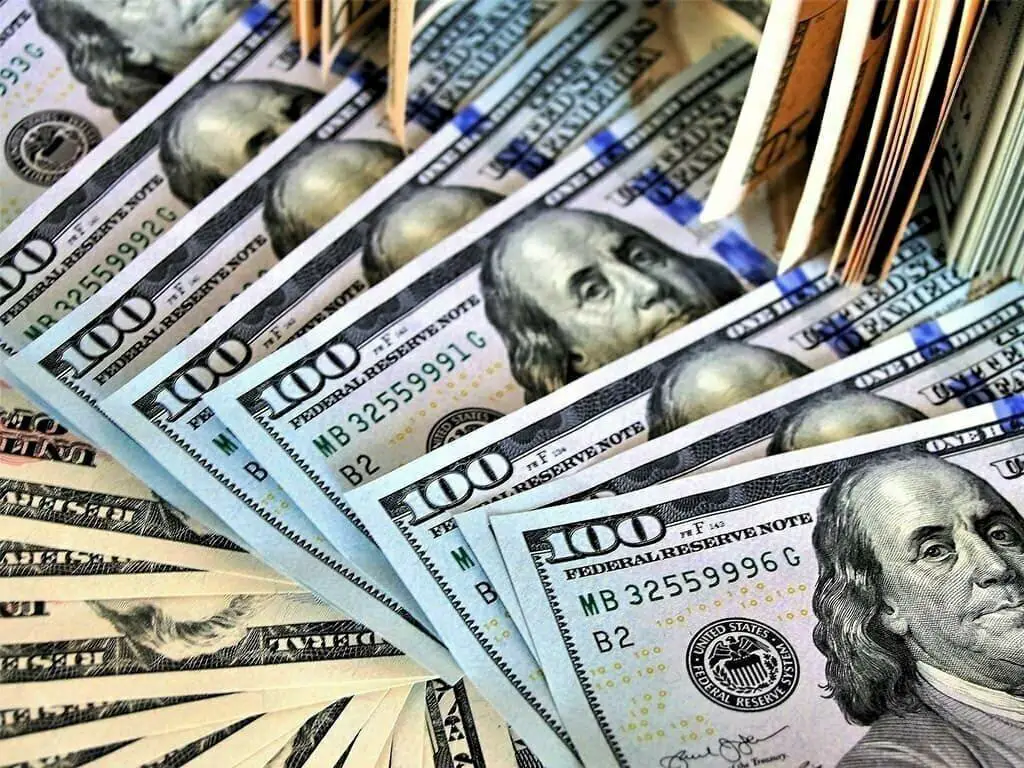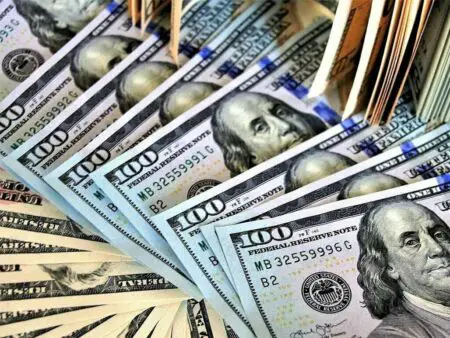- Usable foreign exchange were recorded at USD 6.56 billion last week, which is equivalent to 3.66 months of import cover.
- The shilling has continued to weaken against the US Dollar to a record 130 units to a dollar.
- The country has witnessed a dollar shortage in recent months.
The Kenyan government has put in place a number of measures to tame the country’s dwindling forex reserves and a biting dollar shortage that is being witnessed in the market.
The East African Community (EAC) economic powerhouse is also grappling with a weakening shilling that has dropped by about 12 per cent against the US dollar, the highest in two decades.
It has breached the 130 mark to a dollar, which is a record high. Importers are however accessing the dollar at Ksh145 to the dollar, which has impacted on the cost of imports and commodity prices.
Usable foreign exchange was recorded at $6.56 billion last week, which is equivalent to 3.66 months of import cover below the 4-month target set by the regional Central Banks, marking a 10-year low.
At a similar period last year, the country’s reserves were at $8.01 billion which was then almost five months of import cover.
The reserves have been dented mainly by debt repayment and demand from importers as the country remains a net importer where the trade deficit has been widening.
Debt is projected to go above $71.9 billion (Ksh9.4 trillion) mark at the end of June this year.
According to the National Treasury, as at December last year, the country owed $35.1 billion in external debt and $34.1 billion in domestic debt, forcing it to dip into forex reserves for loan servicing in the wake of maturing foreign debts.
It still stares at the maturing Eurobond and Standard Gauge Railway (SGR) debt maturity where it is expected to repay an estimated $506.7 million.
Trade deficit widened by 15.8 per cent in the third quarter of 2022, pushed by an increase in the importation of petroleum products and fertiliser.
Importation of the two commodities more than doubled during the period under review, Kenya National Bureau of Statics (KNBS) data shows.
The country’s Quarterly Balance of Payments statistics show that in the third quarter of 2022, trade deficit was at Sh434.0 billion compared to the Sh366.1 billion recorded in a similar period last year.
Also read: Tanzania responds to Kenya’s dollar demands
Cumulative 12-month oil imports hit $5.4 billion in September last year, nearly double the $2.9 billion spent in the same period the previous year.
On a full-year scale, the country’s trade deficit widened to $10.7 billion in 2021, the Economic Survey 2022 shows, as the value of imports stood $16.4 billion, up from $12.5 billion in 2020, a 30.9 per cent increase.
This was mainly driven by a rise in petroleum product imports and industrial machinery.
Measures to tame Kenya Shilling depreciation
To tame the high import bill mainly on petroleum products and address the dollar shortage, the government has entered into an arrangement with gulf countries.
It will import petroleum products on credit for up to six months from the United Arab Emirates to ease pressure on dollar demand amid uncertainty over its impact on local pump prices.
According to the country’s Energy and Petroleum Cabinet Secretary Davies Chirchir, the government-to-government deal will see Kenya import 30 percent of its monthly fuel requirements through the State-owned National Oil Corporation (Nock).
The imports, which will come through a credit of between six months and a year, are expected to ease a crisis in the foreign exchange market given that oil shipments account for 28 percent of Kenya’s monthly imports.
“As a government, we have made innovative intentions and strategies to ease the burden of availability of the dollar in our market. We just concluded a market driven arrangement in our fuel sector which will see us meet fuel needs on a deferred six months arrangement,” President William Ruto said on Wednesday.
The government is also keen on reinstating the interbank foreign exchange market.
“We are having conversations with the Central Bank of Kenya to reinstate the interbank foreign exchange market,” Ruto said.
On Wednesday, CBK announced the issuance of the Kenya Foreign Exchange Code (the FX Code) to commercial banks.
The FX Code sets out standards for commercial banks, and aims to strengthen and promote the integrity and effective functioning of the wholesale foreign exchange (FX) market in Kenya.
“It will facilitate better functioning of the market, reinforcing Kenya’s flexible exchange rate regime for greater resilience of the economy,” CBK said in a statement.
The FX Code focuses on six leading principles to be adhered to by institutions.
They are Ethics: ethical and professional behavior when operating in the FX market, Governance: implementation of a sound and effective governance framework to oversee FX market activity, Execution: exercising due care when negotiating and executing transactions and Information Sharing: Clarity and accuracy in communication.
They also focus on Risk Management and Compliance: development and maintenance of a robust control and compliance framework and Confirmation and Settlement Processes: ensuring predictable, smooth, and timely settlement of FX transactions.
According to CBK, Kenya’s FX market has expanded significantly over the years in tandem with global developments.
It is an important enabler of trade, investments, and remittances into and out of the Kenyan economy.
CBK intervention on FX market
Progressively, the Central Bank of Kenya (CBK) in its oversight role over the FX market has enhanced the regulation and surveillance of the market.
“CBK continues to closely monitor the market considering its growing complexity and emerging risks to fair and effective trading,” it says in a statement.
It is against this backdrop that CBK has issued the FX Code. In preparing this FX Code, CBK has also benefitted from related guidance issued by global standard-setting bodies as well as by supervisory authorities in other jurisdictions.
In particular, the FX Code draws from the Global Foreign Exchange Code (Global Code) customized as appropriate to the Kenyan context.
To help restore trust and promote the effective functioning of the global FX market, the Bank for International Settlements (BIS) spearheaded the development of the Global Code.
In developing the Global Code, BIS worked with various market participants from various jurisdictions including Central Banks, banks, asset management firms and corporates.
The Global Code provides a common set of guidance to participants to underpin effective functioning of the FX market.
Additionally, it provides a set of principles universally recognized as best practices.
To date, 51 countries have stated their commitment to the Global Code.
CBK will continue to work with all stakeholders to ensure the integrity and effective functioning of the FX market in Kenya.
Building reserves
Meanwhile, Kenya is banking on diaspora remittances to boost its forex reserves.
Remittance inflows in February 2023 totalled $309.2 million compared to $349.4 million in January, a decrease of 11.5 percent.
The cumulative inflows for the 12 months to February 2023 however grew, totalling $4.026 billion compared to $3.840 billion in February 2022.
The US remains the largest source of remittances into Kenya, accounting for 59 percent of inflows.
“The remittance inflows continue to support the current account and the foreign exchange market,” CBK says in its weekly bulletin.
The country is also keen on increasing exports, mainly agricultural produces among them tea, coffee, avocado, and horticultural exports such as flowers, to boost forex earnings.
It is also counting on inflows from international tourists as the sector recovers from the impact of the Covid-19 pandemic.
The sector recorded an impressive 72 per cent recovery on numbers last year, which closed at 1.4 million (1,483,752) up from 870,465 the previous year, with the US remaining the top market source.
“This growth can be attributed to many source countries lessening their Covid-19 restrictions and opening of travel,” the Ministry of Tourism, Wildlife and Heritage says.
Earnings grew to $2.04 billion from $1.12 billion in 2021, and $676.6 million in 2020, when the pandemic took a toll on the sector.
Arrivals are projected to grow to 2.3 million this year with earnings expected to increase to $3.24 billion.


